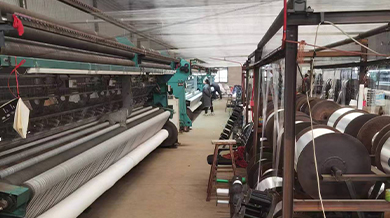-
 Afrikaans
Afrikaans -
 Albanian
Albanian -
 Amharic
Amharic -
 Arabic
Arabic -
 Armenian
Armenian -
 Azerbaijani
Azerbaijani -
 Basque
Basque -
 Belarusian
Belarusian -
 Bengali
Bengali -
 Bosnian
Bosnian -
 Bulgarian
Bulgarian -
 Catalan
Catalan -
 Cebuano
Cebuano -
 China
China -
 Corsican
Corsican -
 Croatian
Croatian -
 Czech
Czech -
 Danish
Danish -
 Dutch
Dutch -
 English
English -
 Esperanto
Esperanto -
 Estonian
Estonian -
 Finnish
Finnish -
 French
French -
 Frisian
Frisian -
 Galician
Galician -
 Georgian
Georgian -
 German
German -
 Greek
Greek -
 Gujarati
Gujarati -
 Haitian Creole
Haitian Creole -
 hausa
hausa -
 hawaiian
hawaiian -
 Hebrew
Hebrew -
 Hindi
Hindi -
 Miao
Miao -
 Hungarian
Hungarian -
 Icelandic
Icelandic -
 igbo
igbo -
 Indonesian
Indonesian -
 irish
irish -
 Italian
Italian -
 Japanese
Japanese -
 Javanese
Javanese -
 Kannada
Kannada -
 kazakh
kazakh -
 Khmer
Khmer -
 Rwandese
Rwandese -
 Korean
Korean -
 Kurdish
Kurdish -
 Kyrgyz
Kyrgyz -
 Lao
Lao -
 Latin
Latin -
 Latvian
Latvian -
 Lithuanian
Lithuanian -
 Luxembourgish
Luxembourgish -
 Macedonian
Macedonian -
 Malgashi
Malgashi -
 Malay
Malay -
 Malayalam
Malayalam -
 Maltese
Maltese -
 Maori
Maori -
 Marathi
Marathi -
 Mongolian
Mongolian -
 Myanmar
Myanmar -
 Nepali
Nepali -
 Norwegian
Norwegian -
 Norwegian
Norwegian -
 Occitan
Occitan -
 Pashto
Pashto -
 Persian
Persian -
 Polish
Polish -
 Portuguese
Portuguese -
 Punjabi
Punjabi -
 Romanian
Romanian -
 Russian
Russian -
 Samoan
Samoan -
 Scottish Gaelic
Scottish Gaelic -
 Serbian
Serbian -
 Sesotho
Sesotho -
 Shona
Shona -
 Sindhi
Sindhi -
 Sinhala
Sinhala -
 Slovak
Slovak -
 Slovenian
Slovenian -
 Somali
Somali -
 Spanish
Spanish -
 Sundanese
Sundanese -
 Swahili
Swahili -
 Swedish
Swedish -
 Tagalog
Tagalog -
 Tajik
Tajik -
 Tamil
Tamil -
 Tatar
Tatar -
 Telugu
Telugu -
 Thai
Thai -
 Turkish
Turkish -
 Turkmen
Turkmen -
 Ukrainian
Ukrainian -
 Urdu
Urdu -
 Uighur
Uighur -
 Uzbek
Uzbek -
 Vietnamese
Vietnamese -
 Welsh
Welsh -
 Bantu
Bantu -
 Yiddish
Yiddish -
 Yoruba
Yoruba -
 Zulu
Zulu
hail netting for vineyards
The Importance of Hail Netting for Vineyards
Hail is a potent threat to vineyards, posing significant risks that can devastate a harvest in minutes. For vineyard owners, protecting grapevines from such unpredictable weather phenomena is crucial to sustaining their livelihoods. One of the most effective solutions to mitigate hail damage is the implementation of hail netting. This article explores the benefits, installation, and advantages of using hail netting in vineyards.
Understanding Hail Damage
Hailstorms can occur suddenly and with little warning, resulting in ice pellets that can vary in size and intensity. When these ice balls strike grapevines, they can bruise the fruit, break branches, and even damage the vine structure itself. This damage can lead to reduced yields, impaired quality of grapes, and in some cases, the complete loss of the harvest. For vineyard owners, this translates into significant financial losses and can impede the long-term viability of their operations.
What is Hail Netting?
Hail netting is a protective mesh that is installed over vineyards to shield grapevines from hail damage. Made from robust, durable materials, this netting is designed to absorb the impact of hailstones, allowing smaller droplets to fall through while breaking larger stones into less damaging sizes. This not only ensures the safety of the grapes but also protects them from other weather-related threats such as heavy rain, strong winds, and even excessive sun exposure.
The Benefits of Using Hail Netting
1. Damage Reduction The primary benefit of hail netting is the significant reduction in damage caused by hailstorms. Studies have shown that vineyards protected by netting experience much lower levels of crop loss compared to those without such protection.
hail netting for vineyards

2. Improved Quality By protecting the grapes from physical damage, hail netting helps maintain the quality of the fruit. This results in a better product for wineries, which can lead to higher prices and a stronger market position.
3. Long-Term Investment While the initial cost of installing hail netting may be substantial, the long-term savings and benefits often far outweigh these costs. By minimizing crop loss and maintaining grape quality, vineyard owners can achieve a higher return on investment over time.
4. Versatility in Protection Besides hail, these nets can protect against other environmental threats. For instance, they can deter birds and insects from damaging the grapes and help regulate temperature by providing shade during the hottest days.
Installation Considerations
When installing hail netting, several factors need to be taken into account. First, the type of netting is crucial; choosing a product that can withstand localized weather conditions is vital. The netting must also be installed at a sufficient height and angle to provide adequate coverage for the entire vineyard. Regular maintenance of the netting is necessary to ensure its effectiveness over time, as wear and tear can reduce protection levels.
Moreover, vineyard owners should consider whether to install the netting permanently or seasonally. Permanent netting can provide year-round benefits, whereas seasonal netting may be more cost-effective for vineyards in regions with less frequent hail events.
Conclusion
As climate change continues to influence weather patterns, the frequency and intensity of hailstorms are expected to rise in many regions. For vineyard owners, installing hail netting is not only a proactive measure to protect their crops but also a strategic investment in their future. By safeguarding against the unpredictable nature of hail, vineyard managers can ensure higher yields, better quality grapes, and, ultimately, a thriving business. The adoption of hail netting represents a critical adaptive strategy in the ever-evolving landscape of agriculture, showcasing the resilience of vineyard owners in the face of environmental challenges.
-
Shipping Plastic Bags for Every NeedNewsJul.24,2025
-
Safety Netting: Your Shield in ConstructionNewsJul.24,2025
-
Plastic Mesh Netting for Everyday UseNewsJul.24,2025
-
Nylon Netting for Every UseNewsJul.24,2025
-
Mesh Breeder Box for Fish TanksNewsJul.24,2025
-
Expanded Steel Mesh Offers Durable VersatilityNewsJul.24,2025











